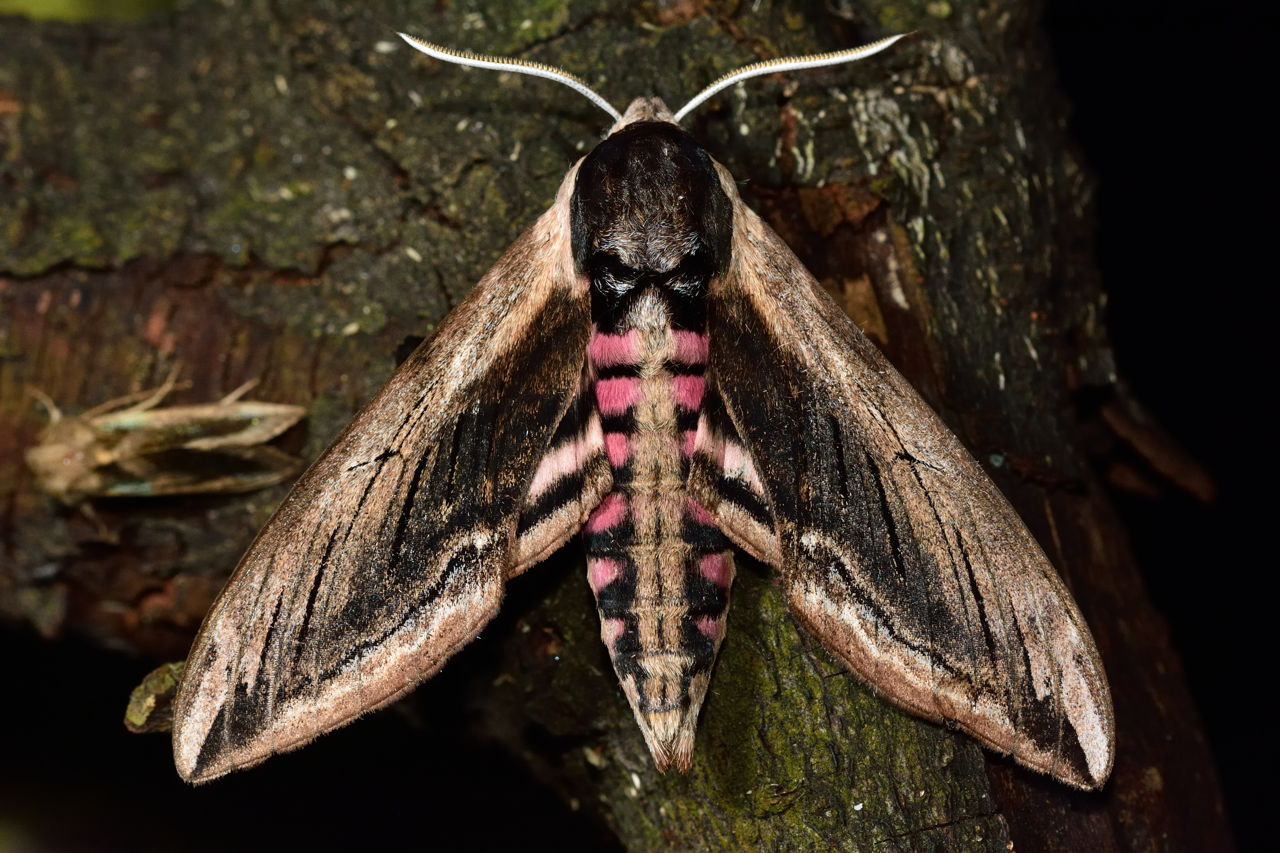Humans cannot be bitten by moths in the same manner. However, by eating holes in them, they may harm fabrics and garments. By keeping them properly stored in sealed bags or cartons, this can be prevented.
Although adult moths can not bite, the mouthparts of the larval (caterpillar) stage do have the opportunity to sting. Work with a repellent to help keep them away from your premises as a result of this.
Their mouths are absent.
You don't notice any mouths on the moths that fly about your house. These insects consume leaves and fruits, drink nectar from flowers, and use their antennae to mate. They also have a very long organ that resembles a straw they utilize to ingest liquids and keep maintaining a wholesome balance of bodily fluids. These moths lose their mouths as they mature and are unable to eat.
Adult moths can't attack humans mostly since they lack mouths. However, certain moths, mostly because of the larvae, may harm clothing and other textiles. Some moth species' larvae eat through wool along with other fabrics, leaving holes, stains, and other damage within their wake. moth bite consume different kinds of houseplants and pantry goods, causing holes and stains in these materials.
Moths are excellent impersonators, and they have developed a number of defense mechanisms against potential predators. For instance, the Polyphemus moth has large eye markings that provide it the appearance of a hornet. The body of the wood nymph, another moth, resembles bird droppings. This aids the moth to avoid being consumed by predators attracted to faeces.
Although it happens seldom, certain moths may sting people. When touched, these moths' spine-like hairs adhere into the skin and produce a toxin that stings painfully. The majority of the time, these stings do not pose a threat to human health, but in rare situations, an allergic response may result in red patches and bumps that resemble hives. Lepidopterism is the name given to this ailment.
They are painless.
Moths are unable to bite people since they lack mouthparts that can penetrate solid objects. However, they might harm your clothes and produce other issues in your house. Using an effective moth repellent is a good approach to keep moths away.
do moths bite or sting don't bite, however caterpillar-stage moths may. As part of their growth, they chew through natural and synthetic materials, which in turn causes this. Your garments and linens may suffer significant loss because of the holes.
Caterpillars of moths contain spines that are designed to protect them from predators. These spines may sometimes entrap themselves in your skin. Lepidopterism, an allergic response that may mimic hives and sting for most minutes, is another allergic reaction they can trigger.
Fortunately, most moth caterpillars lack venomous spines, but there are some exceptions. For instance, the larva of the flannel moth possesses spiky hairs which are simple to snag on your own skin. This may need medical assistance if it results within an uncomfortable, itchy, red section of bumps that resembles hives.

Spines on several other uncommon forms of moth caterpillars are covered with poison. They are often found in the Calyptra genus, and they may make someone's skin itch, become red, and blister. In the eye, it may potentially result in a more serious response that, if not quickly treated with antivenom, could be deadly.
They don't endanger your health.
As most adult species lack the mouthparts essential for biting, moths do not provide a threat to human health. moth bite , however, have prickly hairs that mimic spines and may hurt people badly. These stings could cause itchiness, short-term discomfort, and red patches that mimic hives. Thankfully, these caterpillars are uncommon , nor represent a serious threat to human health.

On the other hand, moth larvae may be harmful. The larvae of the Pantry Moth, Common Miller Moth, and Clothes Moth consume dry goods and textiles. If these bugs get into your house, they could contaminate your meal and destroy your clothing. get more info are able to consume timber along with other materials in your house.
Moths cannot bite, however they may contaminate food, particularly when it is put into the mouths of small infants. It is also known that these moths are parasite and bacterium carriers. Additionally, they could contaminate other kitchenware and storage containers for food.
Moths typically usually do not offer any health issues until they are heavily infected. Although these insects are usually safe for humans, allergy sufferers could have skin or eye irritation. They could also make symptoms worse for people who have dermatitis or a respiratory allergy. Additionally, if a person has a dust mite allergy, the current presence of moths may cause those symptoms to return.
They are a hassle.
Because they can eat holes in wool, silk, along with other natural textiles, moths are an annoyance. Expensive clothes and blankets gets ruined by these holes. They are able to munch their way through carpets and other textiles, making them a nuisance aswell. Moths are not bad for people, however. Both their bite and sting are nonexistent. Their prickly hairs, however, may irritate your skin by pricking it. These hairs have the potential to create hives-like rashes and irritation.
Moths can fly thanks to their wings. They can detect the aroma of food using their antennas aswell. Proboscises, which are mouthparts on certain moths, enable insects to penetrate fruit and other plants. The vampire moth, or calyptra moth, includes a highly specialized proboscis designed to scavenge plant life for blood.
The majority of moths seem soft and velvety and are often within dim areas like cabinets and closets. They're nocturnal and often operate when humans are asleep. If they congregate in great numbers inside dwellings, they might seem to be an annoyance.
The majority of people believe that moths may bite because they gnaw holes in clothing. But it's really the larvae that do this. Adult moths do not gnaw through clothes; instead, they solely consume honey. When they congregate in large numbers to breed inside, they become more bothersome. When moths migrate to raised altitudes in the spring and autumn to consume before hibernating, their populations skyrocket.
